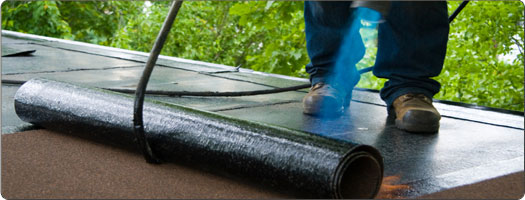
Rubber Roofing
Average Rating
Rate This Article
Most Popular Roofing Cities
Related Articles
Roofing Contractor Roofing Costs: An In-Depth Breakdown Building Your Own Rooftop Garden Copper Roofing Corrugated Roofing Fiberglass Roofing Flat Roofing Metal Roofing Steel Roofing The Future of Roofing 5 Ways to Fix a Leaky Ceiling Green Gutters A History of Rooftop Gardens How to Winterize Your Roof A Review of the iRobot Looj Gutter Cleaning Robot Solar Shingles get State of the Union Plug Atlanta Roofing Contractors and Projects Chicago Roofing Contractors and Projects Chicago Roofing CostsNew material choices like residential metal roofing, fiberglass roofing, and rubber roofing have made almost anything possible. A popular material choice for many flat roofing projects is rubber roofing. For flat roofing, rubber sheets are fused together to form a protective membrane over your roof’s surface. The rubber material used is Ethylene Propylene Diene Monomer also know as EPDM rubber. Rubber roofing is now preferred in low slopping or flat roofs over traditional tar and gravel because it’s better at letting water run off freely without accumulating standing pools or ice dams.
The two main types of rubber roofing are rubber membranes and rubber shingles. With rubber membranes, you essentially cover your roof with a huge rubber sheet. Because it has no seams, rubber membranes are ideal for keeping out moisture. Rubber shingles are made to appear like wood or asphalt shingles. Rubber shingles are lighter and easier to install than traditional shingles. Additionally, rubber shingles also provide most of the traditional advantages of the rubber materials: low maintenance and energy efficient. Rubber shingles, however, do not bestow the same level of leak protection as rubber membranes.
A more recent advancement for residential and commercial roofing is liquid rubber roofing. This is a liquid EPDM rubber that can be applied to most roofing surfaces and waterproofs immediately. Liquid rubber roofing creates a tough, pliable rubber blanket over the entire roof. While quick and easy to apply, liquid rubber roofing can be susceptible to cracking, which will eventually cause roofing failure and leaks. Liquid rubber roofing is best used to patch an existing rubber roofing system.
Because of potential problems with rubber roofing underlayment and possible seepage of water, it’s best to have your rubber roofing installed by a certified roofing contractor.





